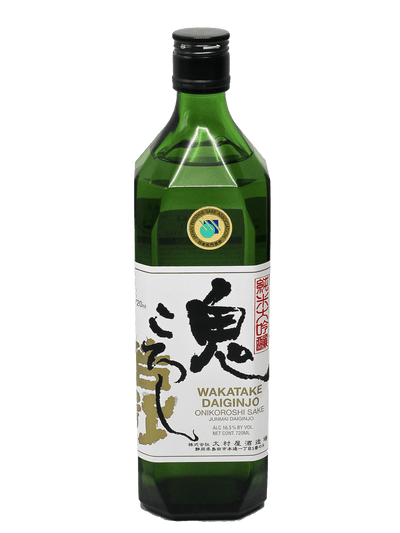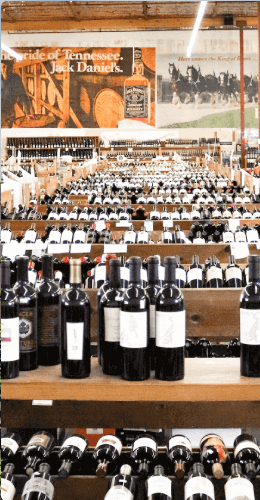Three Different Approaches to Learning to be the Wine Tasting Expert You Already Are: Part Two

In Part One, we looked at the classic French approach to wine tasting and learning about wine. In Part Two, we examine the WSET approach and current trends.
How the British Taught Us to Taste Wine
In the 1950s the UK’s Institute of Masters of Wine, backed by the Wine and Spirits Association and the ancient Vintners Company, started to formalize wine studies and related qualifications, such as the Master of Wine (MW). They standardized knowledge from centuries of England’s wine trade. This was followed by the same wine trade groups founding the Wine and Spirits Education Trust (commonly referred to as the WSET) in the 1960s, oriented to wine trade workers and the public. The WSET developed its Systematic Approach to Tasting®, which has come to dominate the wine world. The Approach is indeed systematic as it’s intended to create a common language of wine, for passing exams, and for writing standardized tasting notes. The Approach follows what has become a classic tasting ritual: first, looking at the wine in a clear glass, tilting it at an angle, ideally against a white background with natural light, to observe the color and clarity; second, swirling the wine in the glass and then putting one’s nose nearly in it to catch the aromas.
After each step the Approach involves marking a sheet with pre-set, neatly divided standards and descriptors. In the brand-new Level 4 sheet, which is the highest qualification issued by WSET, the color of a white wine can be, for example, either lemon, gold, amber, or brown. No mixing, no gold-brown, no hues of green, no “nearly white.” The “nose” can be light, medium minus, medium plus, or pronounced in intensity. Finally, one tastes the wine (“the palate”) for sweetness, acidity, tannin, alcohol, body, flavor intensity, flavor characteristics, “other observations,” and finish. Acidity, for example, can be either “low – medium(-) – medium – medium(+) – high.” Then one moves to describing aroma and flavor. WSET provides a useful, but limited list of options for primary, secondary, and tertiary ones, including, for example: “Tropical Fruit: banana, lychee, mango, melon, passion fruit, pineapple.” Or for secondary aromas and flavors related to “post-fermentation winemaking,” there’s “Yeast: biscuit/graham cracker, bread, toasted bread, pastry, brioche, bread dough, cheese, yogurt, acetaldehyde.” Notably, the flavors and aromas are indicated as suggestive; “you do not need to limit yourself to these terms and the examiners will accept other descriptors so long as they are accurate.”
You get the idea.
Some New Ideas (or Maybe Old) About Learning Wine Tasting
Today, some wine experts find a “contemptuous superiority” in wine tasting rituals and the wine descriptions issued from them. The WSET’s Approach is acknowledged as useful, especially for beginners, but it carries a lot of baggage. Tamlyn Currin, who writes for Master of Wine Jancis Robinson’s website, recently stated: “Entire books have been written and courses (such as the WSET) have been designed to teach us how to taste and how to communicate what we taste. The format, common to most of these educational systems, is almost always rigid, prescriptive, pedantic and comes with a tacit understanding that there is a wrong and a right when it comes to tasting, understanding, experiencing, judging and communicating about wine.”
Much like Andrew Jeffords, she believes “there is no such thing as pure objectivity when it comes to reviewing wine.” She finds that wine tasting is “a uniquely individual experience” and “whatever the firmly held assumptions are, there is no such thing as a right or wrong way” to taste and therefore to “communicate about wine.” The WSET’s admonition, for example, that they “accept other descriptors so long as they are accurate” goes out the window. What is subjective accuracy of flavor? This does not mean that one doesn’t have to learn to taste and appreciate wine; it’s more of a reaction to the rigid normalization and standardization of how that’s done, which is, in turn, based on historical lack of access and diversity in the wine trade and its attendant educational organizations.
In that vein, there’s some new ideas out there about learning to taste wine.
First and foremost, is recognizing and promoting diversity, based on subjectivity, in turn based on difference and tolerance for differing perspectives. The perspective of white heterosexual men in London working for wine firms should no longer dominate, and wine should be for everyone. As wine writer Elaine Chukan Brown said in an interview during the pandemic: “Wine education most often thinks in terms of facts, information and flavours, and forget to think in terms of access, audience, experience and context.” She recommends that worldwide wine programs need anti-bias diversity education integrated into how we learn to taste wine, “across the board.”
Second, some refreshed ideas about how we learn to taste wine have emerged. Asian Master of Wine Sarah Heller in Hong Kong, for example, produced the concept of “visual tasting notes,” digital collages in which the wine’s body and structure (acids, tannins) as well as the aroma, color, and taste come together harmoniously in art. This sounds a lot like the 19th century French approach, emphasizing appreciating a wine’s harmony. Heller developed this technique of learning to taste wine because written wine descriptions don’t always accurately portray the emotions that wine can evoke. In addition, art is universal and accessible.
Another recent Master of Wine, Nick Jackson, published a book called Beyond Flavour: The Indispensable Handbook to Blind Wine Tasting, in which he recounts taking the MW exams, which he “scraped through.” He describes the folly of flavor as basing wine tasting “simply on flavors,” which he had learned through the WSET. He was deceived by flavor, in part because of the necessary subjectivity referred to by Jeffords and Currin. Jackson goes to the extent of saying, “Anything could taste like anything.” His answer? He began thinking about tannin (for red wine) and acid (for white wine) structure in wine. This led to defining the level, type and “shape” of acidity in white wine and the level, type and location of tannin in red wine, which enhances learning to taste and also aids professionals in wine identification during blind tastings. Shapes, levels, and locations, rather than flavors and aromas, lend themselves more to the kind of metaphorical wine writing practiced by Currin and perhaps take some of the diversity-quashing historical bias of out learning to appreciate wine by focused tasting.
Finally, there’s an entire project spearheaded by the founder of the Wine Scholar Guild (WSG), Julien Camus, to kind of undo the WSET hegemony regarding learning to taste wine. It’s called the WSG Tasting Lab™ (yes, another trademark). In short, somewhat similar to Jackson’s approach (but different), it uses newly-developed tasting grids and a lexicon that focus on a wine’s mouthfeel, texture, and shape, often intuitively perceived with the wine in your mouth. Like the old French model, it’s wine-in-mouth, right away. The learning comes in appreciating how these elements relate to the wines’ terroir signature.
Did you like learning about different options for learning to taste wine? Check out Bottle Barn’s other informational wine articles and please comment below!
By Charlie Leary


















Leave a comment